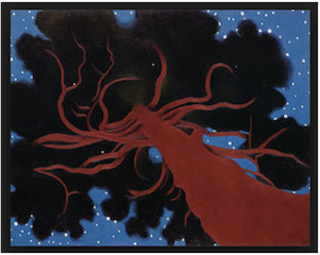 W
WThe Accommodations of Desire is a 1929 surrealist oil painting and mixed media collage on board by Spanish artist Salvador Dalí. It is now in the Metropolitan Museum of Art in New York City.
 W
WAt 4 O'Clock In The Summer, Hope, also known as About Four o'clock in the Summer, the Hope and At Four in the Summer, Hope, is a 1929 painting by French surrealist painter Yves Tanguy.
 W
WAutoportrait is a self-portrait by the Polish artist Tamara de Lempicka, which she painted in Paris in 1925. It was commissioned by the German fashion magazine Die Dame for the cover of the magazine, to celebrate the independence of women. It is one of the best-known examples of Art Deco portrait painting.
 W
WChop Suey (1929) is a painting by Edward Hopper. The foreground of the work portrays two women in conversation at a restaurant. In November 2018, it was sold at a record price for the artist's work.
 W
WThe First Days of Spring (1929) is a painting by the Spanish surrealist Salvador Dalí. This is probably the most famous example of Dalí's early surrealist work.
 W
WThe Foundation of Perth 1829 is a 1929 oil-on-canvas painting by George Pitt Morison. It depicts a reconstruction of the ceremony by which the town of Perth, Western Australia was founded on 12 August 1829. Morison painted the work as part of Western Australia's centenary celebrations, and presented it to the Art Gallery of Western Australia in February 1929.
 W
WFounding of the Nation is a 1929 oil painting by Japanese yōga artist Kawamura Kiyoo (1854–1932). Based on the myth of the cave of the sun goddess from the Kojiki, the painting resides at the Musée Guimet in Paris, where it is known as Le coq blanc or The white cockerel.
 W
WLa Fuensanta is a portrait painting by Spanish artist Julio Romero de Torres depicting Maria Teresa López González, one of Torres' gypsy models. Gonzalez is depicted with her arms resting on a copper cauldron. The painting was made in the autumn of 1929, when Torres completed another two artworks, La Chiquita Piconera and Bodegas Cruz Conde.
 W
WThe Great Masturbator (1929) is a painting by Salvador Dalí executed during the surrealist epoch, and is currently displayed at Museo Nacional Centro de Arte Reina Sofía, Madrid.
 W
WThe Indian Church is a 1929 painting by Canadian artist Emily Carr. Group of Seven artist Lawren Harris bought the painting to showcase it in his dining room, and called it Carr's best work. In 1930, the work was shown in the Fifth Annual Exhibition of Canadian Art organised by the National Gallery of Canada. In 1938, the painting was chosen for an exhibition titled A Century of Canadian Art, at the Tate Gallery. The exhibition was described by Vincent Massey as "a most representative showing of Canadian painting and sculpture, including all schools and all periods." It is considered a "transitional" painting because it reflects the transition of Carr's artistic work from purely depicting Native Art to shifting her focus toward the land.
 W
WThe Lugubrious Game is a part oil painting and part collage on cardboard artwork created by Salvador Dalí in 1929. It displays references to feces, sexual desire, castration and alludes to the "safety" of masturbation. The name of the painting was given by poet Paul Éluard.
 W
WMadonna with angel is a painting by Ľudovít Fulla from 1929.
 W
WOn the Threshold of Liberty refers to two oil on canvas paintings by the Belgian surrealist René Magritte. The work depicts a large room with the walls paneled with different scenes or windows. Each panel reveals a different subject: a sky, fire, wood, a forest, the front of a building, an ornamental pattern, a female torso and a strange metallic texture featuring spherical bells. Inside the room is a cannon.
 W
WThe Lawrence Tree is a painting by Georgia O'Keeffe in 1929 of a large ponderosa pine tree on the D. H. Lawrence Ranch in Taos County, New Mexico. The tree still survives, and may be visited at the Lawrence Ranch.
 W
WThe Treachery of Images is a 1929 painting by surrealist painter René Magritte. It is also known as This is Not a Pipe and The Wind and the Song. Magritte painted it when he was 30 years old. It is on display at the Los Angeles County Museum of Art.
 W
WUpward is an oil on cardboard painting created in 1929 by the Russian abstract painter Wassily Kandinsky. Painted at a time when Kandinsky was teaching art at the Bauhaus in Dessau, Germany, it now forms part of the Peggy Guggenheim Collection in the Palazzo Venier dei Leoni, Venice, Italy.